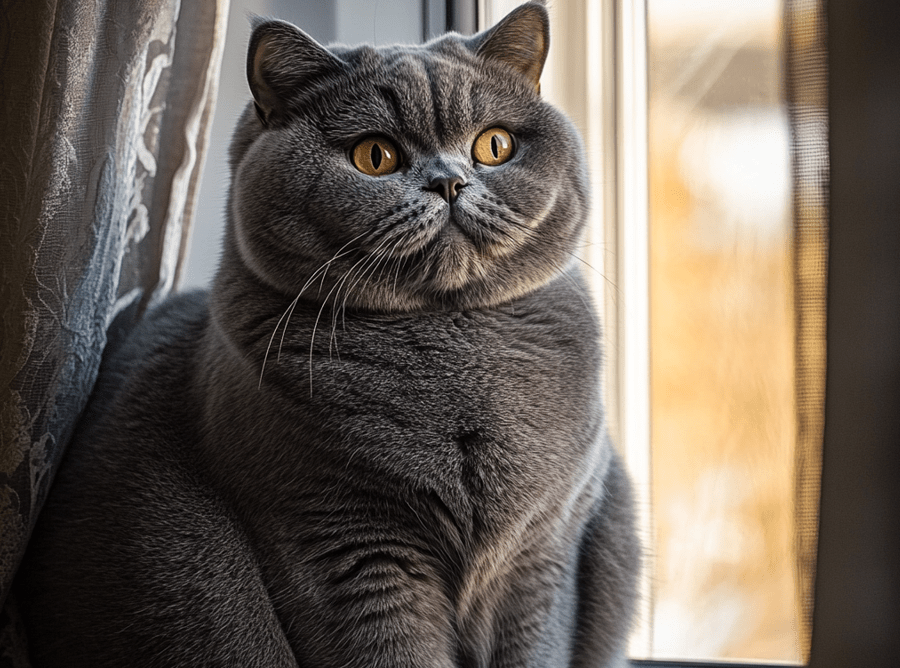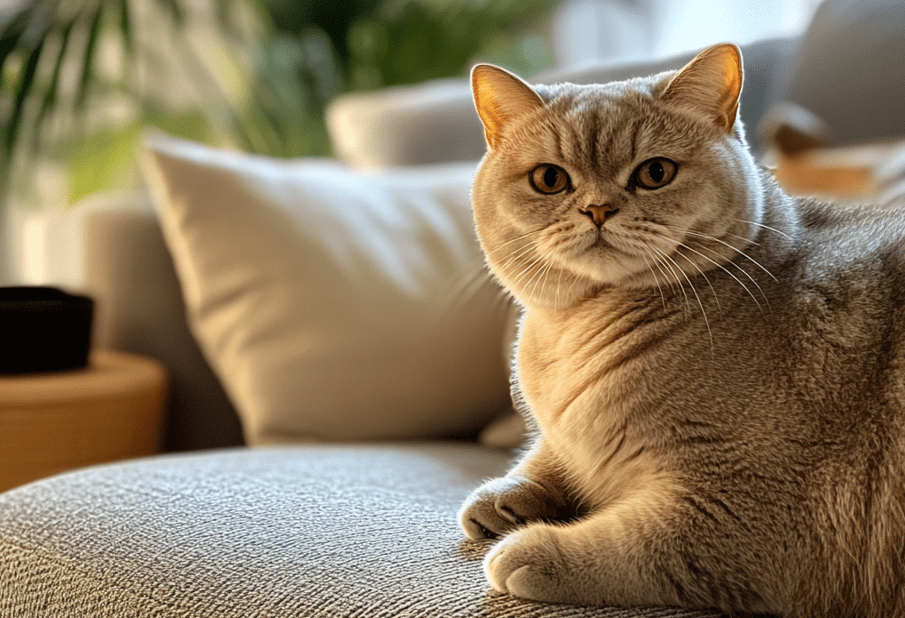
The British Shorthair cat, with its plush coat and charming demeanor, is a beloved companion for many pet owners. However, like all breeds, British Shorthairs are prone to specific health concerns, including heart conditions such as hypertrophic cardiomyopathy (HCM). Monitoring your British Shorthair’s heart health at home is essential for early detection and management of potential issues. This comprehensive guide provides practical steps, expert insights, and actionable advice to help you keep your feline friend’s heart in top condition.
Understanding British Shorthair Heart Health
British Shorthairs are generally robust, but their genetic predisposition to heart conditions, particularly HCM, requires vigilant care. HCM is the most common heart disease in cats, characterized by the thickening of the heart muscle, which can impair its ability to pump blood effectively. Early detection is critical, as symptoms may not appear until the condition is advanced. By learning to monitor your British Shorthair’s heart health, you can catch subtle signs and seek veterinary care promptly.
Why Heart Health Matters for British Shorthairs
Heart disease in cats can lead to serious complications, including heart failure, blood clots, or sudden death. British Shorthairs, with their calm and laid-back nature, may not always display obvious symptoms of distress, making at-home monitoring a vital part of their care. Regular observation can help you identify changes in behavior, energy levels, or physical condition that may indicate heart issues.
Common Heart Conditions in British Shorthairs
Before diving into monitoring techniques, it’s helpful to understand the heart conditions that may affect your British Shorthair:
Hypertrophic Cardiomyopathy (HCM): As mentioned, HCM involves thickening of the heart muscle, reducing the heart’s efficiency. It’s the most prevalent heart condition in British Shorthairs.
Dilated Cardiomyopathy (DCM): Though less common, DCM causes the heart muscle to weaken and enlarge, affecting its pumping ability.
Arrhythmias: Irregular heart rhythms can occur in British Shorthairs, sometimes as a secondary effect of other heart conditions.
Congenital Heart Defects: Some British Shorthairs may be born with structural heart abnormalities, though these are rare.
Understanding these conditions helps you know what to watch for when monitoring your cat’s heart health.
How to Monitor Your British Shorthair’s Heart Health at Home
Monitoring your British Shorthair’s heart health involves observing their behavior, physical condition, and vital signs. Below are practical steps you can take at home to stay proactive.
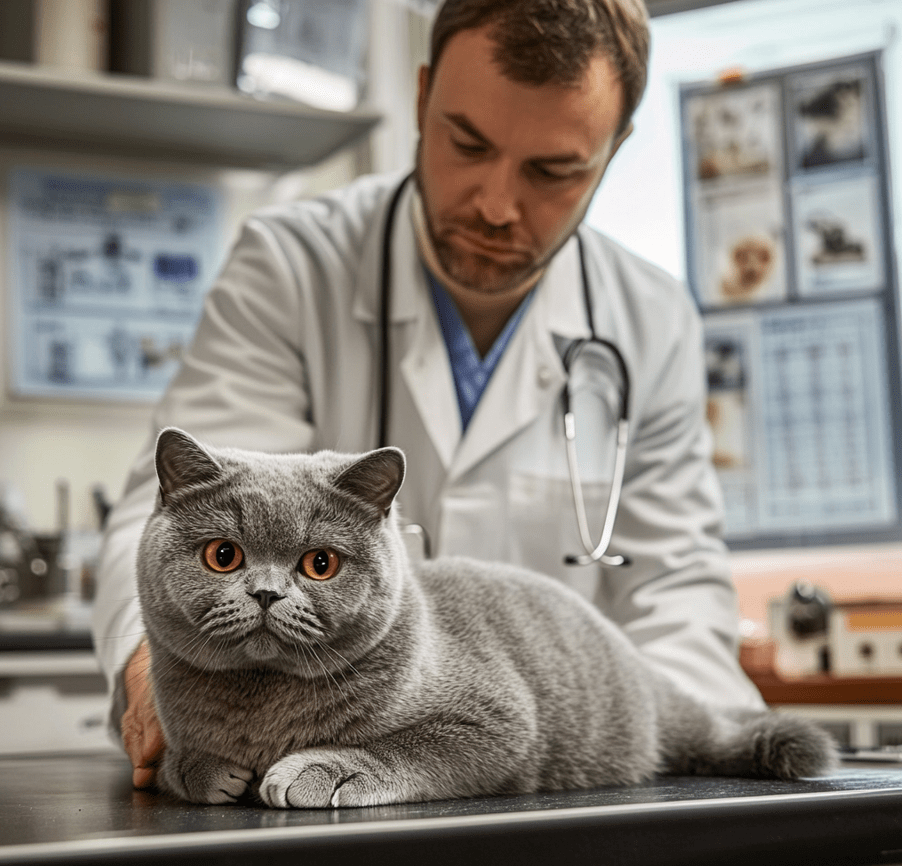
1. Observe Behavioral Changes
Cats are masters at hiding discomfort, but subtle behavioral changes can signal heart issues. Pay attention to the following:
Lethargy or Reduced Activity: British Shorthairs are naturally relaxed, but a noticeable decrease in playfulness or energy could indicate a problem.
Difficulty Exercising: If your cat becomes winded or avoids jumping or climbing, it may be a sign of reduced heart function.
Changes in Appetite: A sudden loss of appetite or disinterest in food can be linked to heart issues or related discomfort.
Tip: Keep a journal to track your cat’s behavior over time. Note any changes, even if they seem minor, to share with your veterinarian.
2. Monitor Breathing Patterns
Respiratory changes are often an early indicator of heart problems in cats. Here’s what to look for:
Rapid or Labored Breathing: Count your cat’s breaths per minute while they’re resting (normal is 15-30 breaths per minute). An elevated rate or labored breathing could suggest heart or lung issues.
Open-Mouth Breathing: Cats typically breathe through their noses. Open-mouth breathing or panting is abnormal and warrants immediate veterinary attention.
Coughing or Wheezing: While less common in cats than dogs, coughing can be a sign of heart disease, especially if paired with other symptoms.
How to Check Breathing Rate:
-
Observe your cat when they’re resting or sleeping.
-
Count the number of breaths (one rise and fall of the chest) in 15 seconds.
-
Multiply by 4 to get breaths per minute.
-
Repeat this process weekly to establish a baseline for your British Shorthair.
3. Check for Physical Symptoms
Physical signs can provide clues about your cat’s heart health. Regularly inspect your British Shorthair for:
Swelling or Fluid Retention: Heart conditions can cause fluid buildup, leading to swelling in the legs, abdomen, or chest. Gently feel your cat’s belly or limbs for unusual puffiness.
Pale or Blue-Tinged Gums: Healthy gums should be pink. Pale or bluish gums may indicate poor circulation or oxygenation, common in heart disease.
Weight Changes: Unexplained weight loss or gain (due to fluid retention) can be a red flag.
Tip: Get to know your cat’s normal appearance by routinely checking their gums, body condition, and weight. This makes it easier to spot deviations.
4. Listen to Their Heart
With practice, you can learn to listen to your British Shorthair’s heart using a stethoscope, available at most pharmacies. Here’s how:
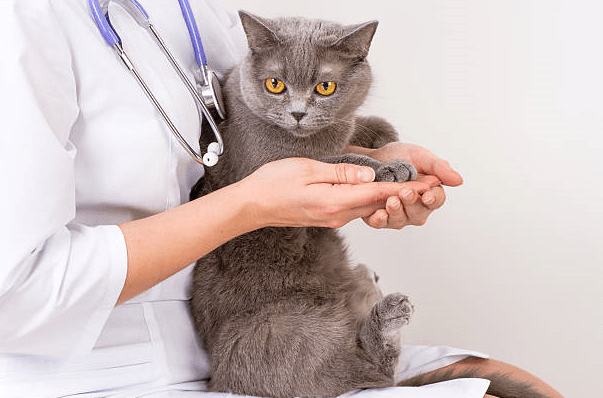
Find the Heartbeat: Place the stethoscope on the left side of your cat’s chest, just behind the elbow.
Count the Heart Rate: A normal resting heart rate for cats is 140-220 beats per minute. Count beats for 15 seconds and multiply by 4.
Listen for Abnormalities: Murmurs, irregular rhythms, or unusual sounds may indicate a problem, though only a veterinarian can diagnose these.
Note: Always consult a vet if you detect anything unusual. Home monitoring is not a substitute for professional diagnostics.
5. Maintain a Healthy Diet and Weight
Obesity is a risk factor for heart disease in cats, as it puts extra strain on the heart. British Shorthairs are prone to weight gain due to their sturdy build and relaxed demeanor. To support heart health:
Feed a Balanced Diet: Choose high-quality, vet-recommended cat food with appropriate protein and nutrient levels. Avoid foods high in sodium, as they can exacerbate heart issues.
Portion Control: Follow feeding guidelines and adjust portions based on your cat’s activity level and weight.
Monitor Weight: Weigh your cat monthly using a pet or baby scale. Sudden weight changes should prompt a vet visit.
6. Encourage Gentle Exercise
While British Shorthairs aren’t as active as some breeds, regular movement supports cardiovascular health. Encourage play with toys like feather wands or laser pointers, but avoid overexertion, especially if heart issues are suspected.
Tip: Short, frequent play sessions (5-10 minutes, 2-3 times daily) are ideal for keeping your British Shorthair active without stress.
7. Schedule Regular Veterinary Checkups
Home monitoring complements, but doesn’t replace, professional care. Annual or biannual vet visits are crucial for British Shorthairs, especially as they age. Your vet may recommend:
Echocardiograms: An ultrasound of the heart to detect HCM or other abnormalities.
Blood Tests: To assess overall health and detect markers of heart disease.
Blood Pressure Monitoring: High blood pressure can strain the heart and is common in older cats.
Tip: Ask your vet about genetic screening for HCM, as some British Shorthairs carry predisposing genes.
Recognizing Emergency Symptoms
Some signs of heart trouble require immediate veterinary attention. Contact your vet or an emergency clinic if your British Shorthair exhibits:
1.Sudden collapse or fainting
2.Severe difficulty breathing
3.Paralysis or dragging of hind legs (possible blood clot)
Extreme lethargy or unresponsiveness
Preventive Measures for British Shorthair Heart Health
Prevention is key to keeping your British Shorthair’s heart healthy. Incorporate these habits into your routine:
Stress Management: Stress can exacerbate heart issues. Provide a calm environment with hiding spots, quiet spaces, and a consistent routine.
Dental Care: Poor dental health can lead to bacterial infections that affect the heart. Brush your cat’s teeth regularly and schedule professional cleanings as needed.
Supplements: Some veterinarians recommend omega-3 fatty acids or taurine supplements to support heart health, but always consult your vet before adding supplements.
Conclusion
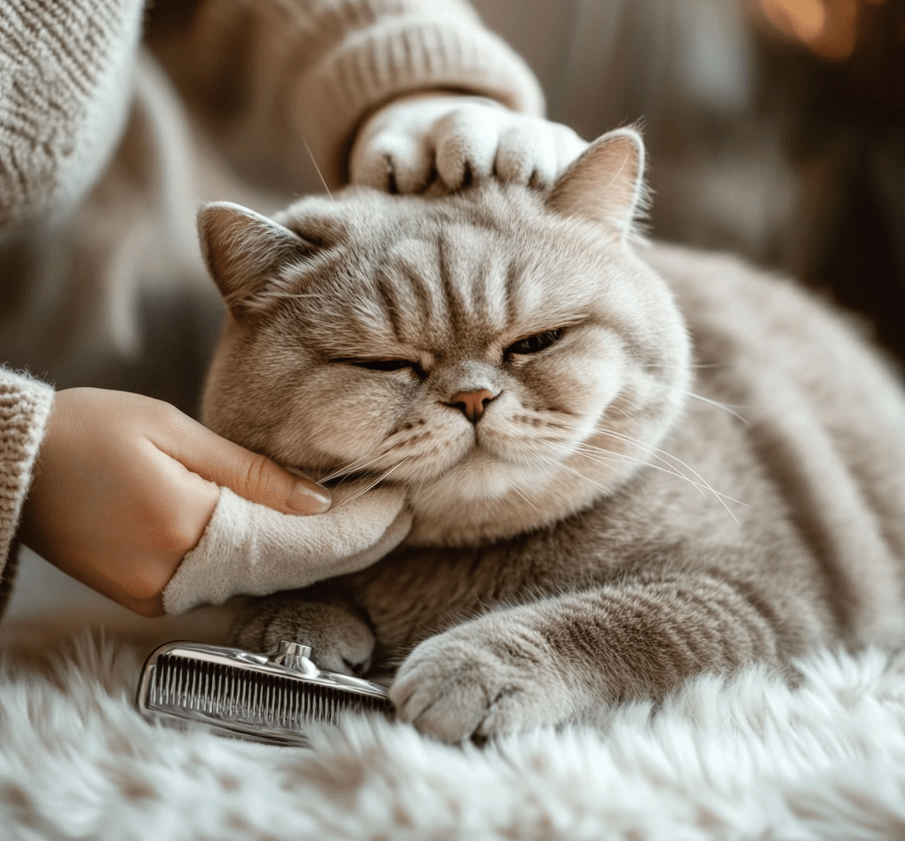
Monitoring your British Shorthair’s heart health at home is a proactive way to ensure their well-being. By observing behavior, tracking vital signs, maintaining a healthy lifestyle, and partnering with your veterinarian, you can catch potential issues early and provide the best care for your feline companion. With diligence and love, you can help your British Shorthair live a long, healthy life with a strong, happy heart.
This guide is designed to empower you with the knowledge and tools to safeguard your British Shorthair’s heart health. Stay attentive, stay informed, and enjoy the rewarding journey of caring for your cherished pet.

